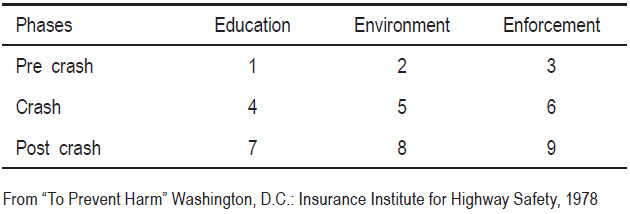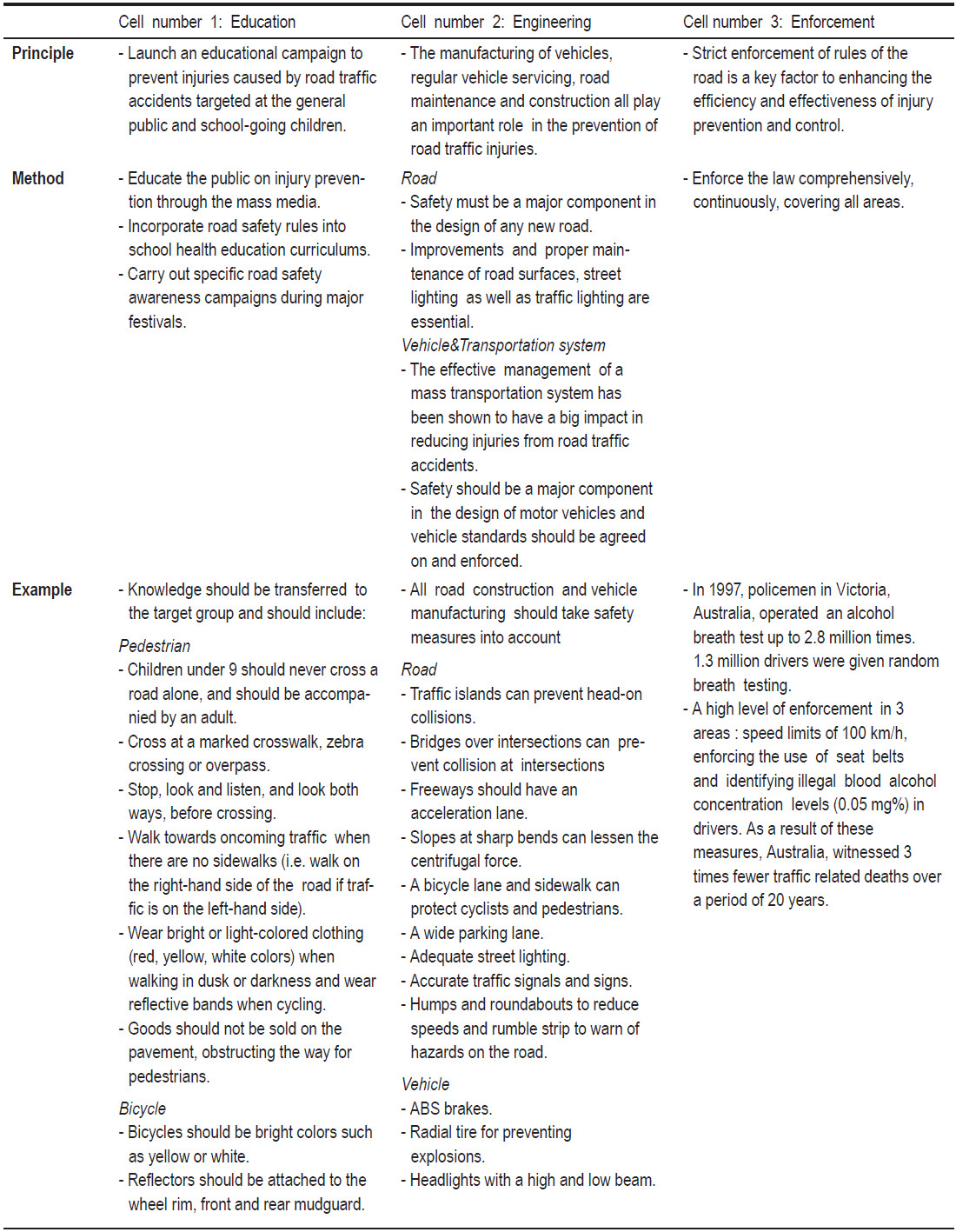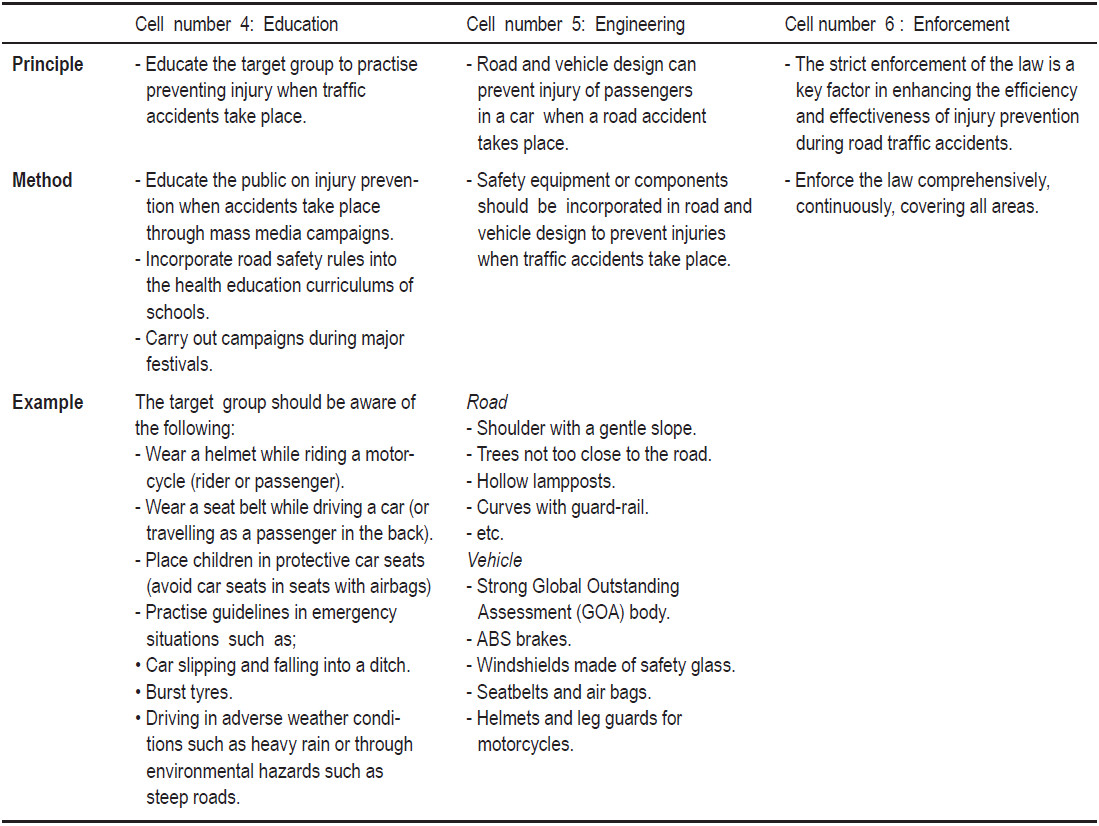Road trafficinjuries in Thailand are becoming more criti- cal and are the 2nd leading cause of death, second only to heart disease. In many provinces, traffic accidents rank as the leading cause of death. Furthermore, traffic injuries are the 1st leading cause of death among people aged below 40. This age group is the most economically productive and their loss has a great impact on their families and on national productivity.1
Traffic injuries are responsible for more morbidities and disabilities, than any other cause. Moreover, they result in damage to goods and property and can cause a significant post-crash impact on the victim’s family, public health, society, and the economy.2-5
Each year, more than 600,000 trauma patients are hospitalized, and more than 1,000,000 receive minor injuries from traffic accidents. Traffic injuries alone account for more than 10,000 deaths a year, whilst about 40,000 people become disabled a year, causing a heavy economic burden to family, society, and the country as a whole.1,6,7
No matter whether young or old, male or female, students, workers or officers, almost everyone has to use the road to get to their destination and back home at least twice a day.
At present, there are many drivers who do not obey the rule of the road and are at risk of being in or causing a serious traffic accident. Road users increase their chance of being involved in an accident if:
- Driving while drunk
- Acting carelessly or acting aggressively
- Suffering from personality disorders
- Inexperienced, underage or badly trained Not paying attention
These everyday factors mean that nobody is safe on our roads. A traffic accident can happen in a second.
It is not hard to list the different possible causes of road traffic accidents. It is much harder to implement successful and effective preventive measures that involve multiple government agencies and individuals. The Thai public health sector is well aware of the grave losses from injuries and fatalities, but lacks the requisite experience and technical expertise to overcome multiple obstacles. The reduction of traffic accidents is not just a matter for the public health service, it also involves multiple agencies. A great number of individuals just do not realize the importance of taking responsible steps to avoid traffic accidents. Furthermore, there needs to be coordination and effective cooperation between agencies to synchronize activities to maximize their effectiveness. The failure of government agencies and individuals to deal with this issue has resulted in an increasing number of injuries recorded.
Moreover, there is a false belief that road traffic safety measures exist in Thailand. Furthermore there are falsely held beliefs about the reason for so many accidents:
- It is widely believed that a traffic accident is down to fate or the will of God despite being preventable.
- Many organizations campaign for the prevention of road traffic injuries. But this is only done with poster campaigns, to affect behaviour change with too little focus on the strategy of policy development and law enforcement. Furthermore, most campaigns are reserved for New Year and Songkran festivals only. Campaigns should be ongoing, year round.
- There are many people who still believe that the best way to solve the number of traffic accident injuries is to raise awareness through campaigns and education programs aimed at school goers and the general public.
- Many people agree to being driven by a drunk driver.
- Many people are too frightened to ask a driver to slow down, or even to get out of the vehicle if the driver persists in speeding.
Injury prevention and road safety control measures can be developed systematically.
In 1937, Godfrey adopted an epidemiological model in his analytical study of traumatism and achieved a systematic planning of injury control.
In 1949, Gordon proved that a detailed epidemiological classification was viable for injury as well as for other sudden or chronic diseases.
In 1978, the very famous epidemiologist William Haddon Jr. (1926-1985) from the Insurance Institute for Highway Safety of the United States, promoted injury control measures (Table 1). The proposed approach was a matrix in which the human, vehicle and environmental factors of a crash are shown interacting with the three phases of a crash – pre crash, during the crash, and post crash – to form a nine-cell matrix, which became known as the Haddon matrix. This was then used as a planning tool for road traffic injury prevention worldwide. Each cell in this matrix offers opportunities for intervention or countermeasures to reduce fatalities caused by motor vehicle accidents.
Based on Haddon’s Matrix, we can develop a systematic program of injury prevention and control and cover all phases by implementing the required interventions placed in each cell of the matrix.
Table 1: Injury Control Measures Classifi ed According to Three Factors and Three Phases

Phase 1: Primary Prevention - Pre Crash Prevention Refers to Preventing the Crash from Happening

Phase 2: Secondary Prevention - Injury Prevention Refers to Preventing an Injury when The Crash Occurs.

Phase 3: Tertiary Prevention – Post Crash Prevention Refers to Preventing Fatalities when an Injury Occurs.

The above systematic concept enables all agencies involved to apply these measures of injury prevention and control to cover all phases of road traffic accidents. After the strategies are determined, the next step is to consider how to implement them.
The International Association of Traffic and Safety Science has stipulated four major principles in injury prevention:1
The most significant principle is the multi-sectorial approach due the complexity of the problem and the need to involve several government and civic agencies. Therefore, all agencies involved have to work together to reach sensible solutions.
The World Health Organization (WHO) Collaborating Center on Safe Community, Karolinska Institute, Sweden proposed the following principles for a safer community:1
Based on the above concept and principles, the United Nations announced the Decade of Action for Road Safety 2011-2020. Its strategies for preventing road traffic injuries are as follow:9
Thailand needs to implement a wide range of programmes and initiatives before we can expect to travel safely on our roads. Only by working together will we be able to prevent road traffic injuries from increasing year on year.